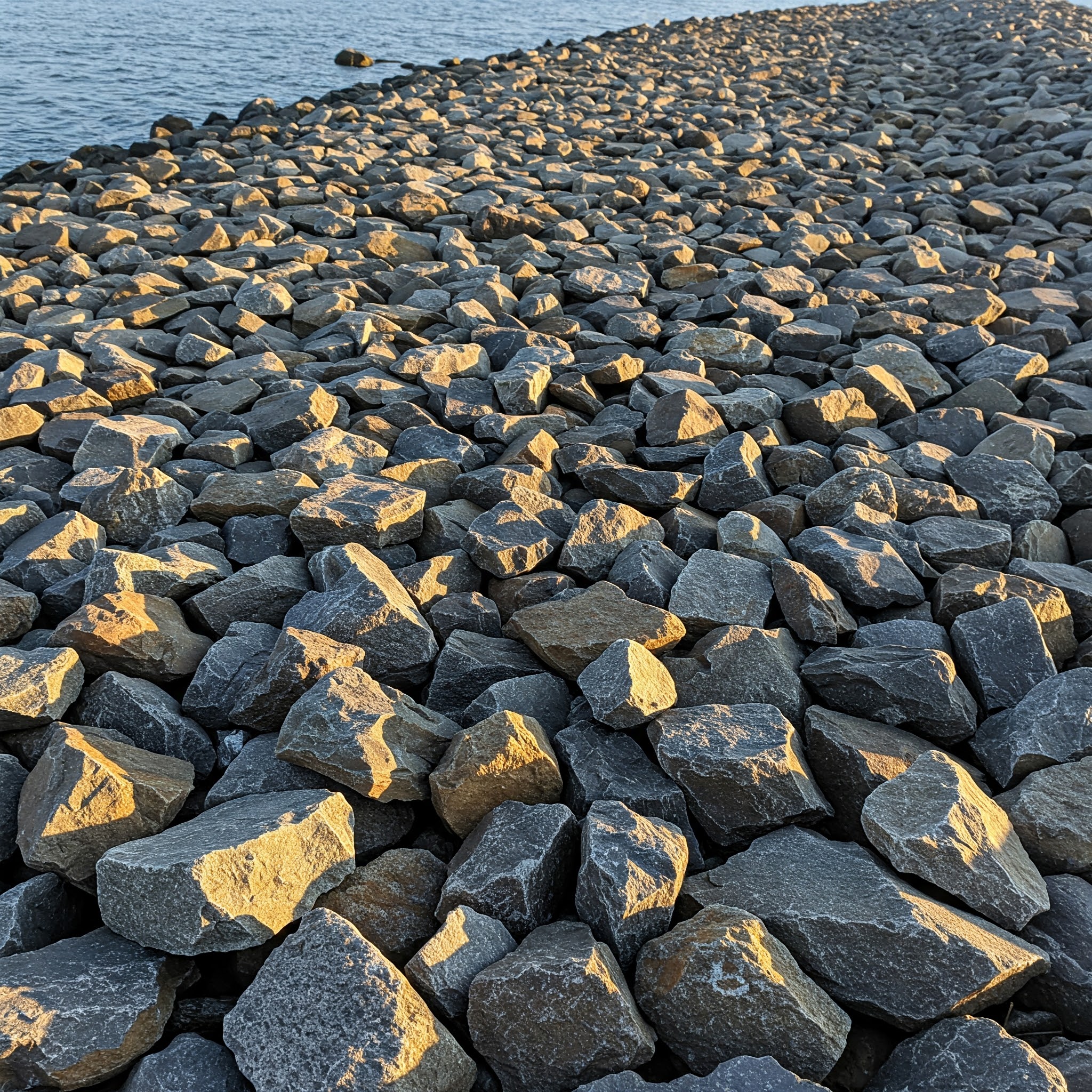Riprap Rock Size
Riprap Rock Size Formula |
||
| \( D \;=\; \dfrac{ v^2 }{ 2 \cdot g \cdot c^2 \cdot (s - 1) }\) |
||
| Symbol | English | Metric |
| \( D \) = Median Diameter of Spherical Stone or Rock | \(in\) | \(mm\) |
| \( v \) = Water Velocity Approaching the Riprap | \(ft\;/\;sec\) | \(m\;/\;s\) |
| \( g \) = Gravitational Acceleration | \(ft\;/\;sec^2\) | \(m\;/\;s^2\) |
| \( c \) = Isbash Constant (c = 0.86 for Highly Turbulent Conditions or c = 1.2 for Low Turbulence) | \(dimensionless\) | \(dimensionless\) |
| \( s \) = Specific Gravity of Stone or Rock (Typically Varies from 2.56 to 2.92 Depending on the Rock Material. A Commonly Used Value is 2.65.) | \(dimensionless\) | \(dimensionless\) |
 Riprap rock size refers to the dimensions of the stones used in riprap, which is a layer of large, angular rocks placed along shorelines, riverbanks, bridge abutments, and other erosion-prone areas to prevent soil loss due to water or wind. The size of riprap varies based on the application and site conditions. Larger sizes are used for high-energy environments such as coastal protection, while smaller sizes work well for drainage channels and embankments.
Riprap rock size refers to the dimensions of the stones used in riprap, which is a layer of large, angular rocks placed along shorelines, riverbanks, bridge abutments, and other erosion-prone areas to prevent soil loss due to water or wind. The size of riprap varies based on the application and site conditions. Larger sizes are used for high-energy environments such as coastal protection, while smaller sizes work well for drainage channels and embankments.
Common Riprap Rock Sizes (by Class and Diameter)
- Class 1 - 2" - 12" (50 - 300 mm)
- Class 2 - 4" - 18" (100 - 450 mm)
- Class 3 - 6" - 24" (150 - 600 mm)
- Class 4 - 12" - 36" (300 - 900 mm)
- Class 5 - 18" - 48" (450 - 1200 mm)

